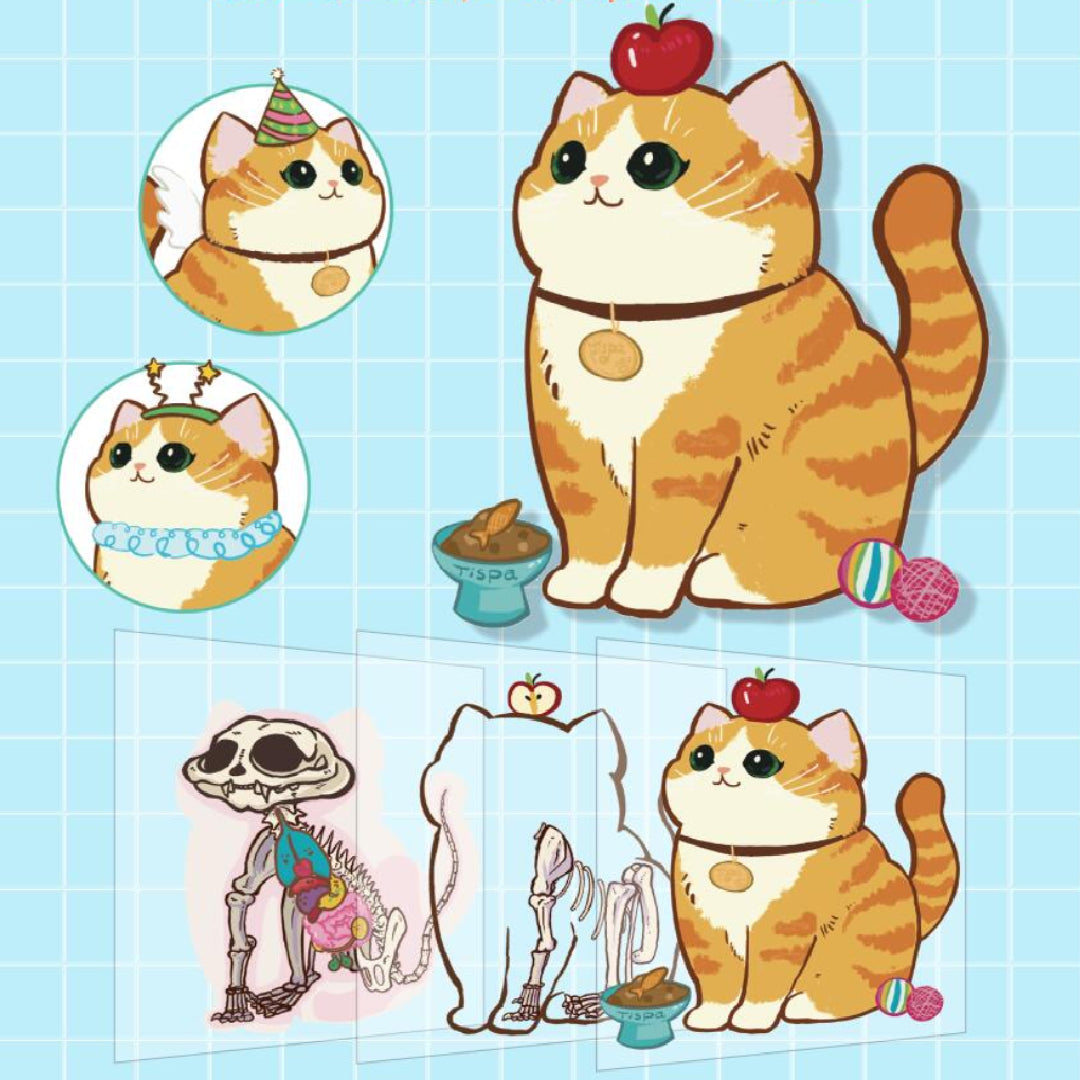
Why Do I Lose Interest in Things So Fast?
Share
In today’s fast-paced world, it’s easy to lose interest in things quickly. Whether it’s a new hobby, a workout routine, or even a project we started with excitement, we often find ourselves losing momentum before we achieve our goals. This tendency to lose interest can leave us feeling frustrated, unproductive, and dissatisfied. But why does this happen, and is there a way to manage or overcome it? In this article, we will explore the psychology behind losing interest, external factors that affect our motivation, and practical tips on how to stay engaged in our activities. We'll also take a look at how this phenomenon applies to creative hobbies, like working with 3D scene stickers and ASMR landscape stickers, as well as DIY projects.
Understanding the Psychology Behind Losing Interest
Losing interest is a common experience, and understanding the psychology behind it can offer valuable insights into why it happens. One primary reason we lose interest is due to novelty fatigue. When we first encounter something new, our brains release dopamine, a neurotransmitter associated with pleasure and reward. This flood of dopamine makes us feel excited and motivated. However, over time, as we become more familiar with the activity or task, our brains become less responsive to the same stimuli, causing the initial excitement to fade.
Another factor is the lack of intrinsic motivation. Intrinsic motivation refers to engaging in an activity for the sake of enjoyment or personal fulfillment, rather than external rewards. If we’re only doing something for external validation, like seeking approval or material gain, the lack of intrinsic motivation can lead to boredom and loss of interest once the rewards no longer feel significant.
Attention and focus also play a crucial role in maintaining interest. When we are distracted or overwhelmed with too many tasks or external stimuli, our ability to concentrate on one thing becomes compromised. This lack of focus makes it difficult to stay engaged and can lead to quickly losing interest in the task at hand.
External Influences that Affect Our Interests
While psychology plays a key role in losing interest, external factors can also have a significant impact on our level of engagement. One such factor is social comparison. We live in a world where social media constantly showcases the successes and achievements of others. This can lead to feelings of inadequacy or pressure to live up to certain expectations. When we compare ourselves to others, especially those who seem to have mastered a particular skill or activity, it can diminish our enthusiasm and make us question whether our own efforts are worth pursuing.
Another external influence is environmental distractions. In today’s digital age, we are bombarded by notifications, advertisements, and a constant flow of information. These distractions can pull our attention away from the task we are trying to focus on, making it difficult to maintain interest for long periods. The rise of social media platforms, where quick content consumption is the norm, has contributed to this problem, as we become accustomed to switching between tasks rapidly rather than dedicating our time to a single focus.
Cultural and societal trends can also shape our interests. For example, the popularity of certain activities, such as DIY projects or creative hobbies like working with 3D scene stickers, can spark initial excitement. However, as trends shift or become oversaturated, our interest in those activities may fade. This is particularly common when hobbies become a trend-driven pursuit rather than a genuine passion.
How to Manage or Overcome the Issue
Managing or overcoming the tendency to lose interest requires both self-awareness and practical strategies. Here are a few ways to stay engaged:
1. Set Clear, Achievable Goals
One of the most effective ways to stay engaged is by setting clear, realistic goals. When you know exactly what you want to achieve, it’s easier to stay motivated. For example, if you’re working with fresh 3D art stickers, set a goal to create a specific design by the end of the week. Breaking down larger tasks into smaller, more manageable ones can help maintain focus and prevent overwhelm.
2. Focus on Intrinsic Motivation
Shift your focus from external rewards to the personal enjoyment and satisfaction you get from the activity itself. Engage in hobbies like ASMR landscape stickers or DIY crafts because they bring you joy, not because you are trying to gain validation or recognition. When you’re intrinsically motivated, you’re more likely to stick with the activity for longer periods.
3. Create a Distraction-Free Environment
Minimize distractions by creating a dedicated workspace for your hobbies or projects. For example, if you’re working on decorating a room with 3D scene stickers, make sure your space is organized and free from unnecessary distractions. Consider turning off your phone notifications or using apps that block distracting websites while you focus.
4. Find a Community or Support System
Connecting with others who share your interests can help reignite your passion and provide accountability. Whether it’s joining an online group of DIY enthusiasts or participating in social media communities related to 3D scene stickers and ASMR landscape stickers, having a support system can help you stay engaged and motivated.
5. Embrace the Process, Not Just the Outcome
Enjoy the journey of learning and creating, rather than focusing solely on the end result. This mindset shift can help prevent boredom and increase satisfaction. When working with fresh 3D art stickers, take the time to experiment with different designs and techniques. Embrace the creative process and allow yourself to enjoy the act of creating without stressing about perfection.
Real-Life Applications (For Example, ASMR Stickers and DIY Projects)
The process of working with 3D scene stickers or ASMR landscape stickers offers a great example of how to maintain interest in creative hobbies. These types of stickers allow for endless possibilities and creativity, which can make the experience more engaging and enjoyable. By focusing on the experience of designing or decorating with these stickers, rather than solely on the end result, you can prolong your interest and sustain your motivation.
For example, imagine designing a room with 3D scene stickers that create an immersive, magical atmosphere. Each sticker can be carefully placed to create a unique environment that reflects your style. Whether you’re adding a forest scene, a cityscape, or an ocean view, the process of curating and arranging the stickers allows for creative expression and can provide a sense of accomplishment that keeps you engaged.
Similarly, ASMR landscape stickers can enhance your experience by adding a sensory dimension to your DIY projects. The soothing sounds of peeling and placing stickers can trigger a calming response, making the process not only visually satisfying but also emotionally relaxing. This multisensory engagement can make it easier to stay interested and immersed in the activity.
In the context of DIY projects, the key to maintaining interest lies in the ability to adapt the project to suit your personal preferences and needs. Whether you’re decorating your space with stickers or engaging in other creative tasks, finding ways to make the project unique to you can help maintain a sense of novelty and excitement.
Conclusion
Losing interest in things quickly is a common issue, but it’s not something we have to accept. By understanding the psychological factors that contribute to this behavior, recognizing the external influences that affect our motivation, and applying practical strategies, we can stay engaged and motivated in our activities. Whether it’s working with 3D scene stickers, creating ASMR landscape stickers, or engaging in other DIY projects, the key is to focus on intrinsic motivation, create a distraction-free environment, and embrace the creative process. With these strategies, we can continue to find joy and fulfillment in our hobbies, ensuring that we don’t lose interest so easily.
Explore our full collection of 3D scene stickers at Momo Stickers and dive into the world of creativity and relaxation through DIY sticker projects. Follow us on Instagram @momostickers_official for more inspiration and tips!